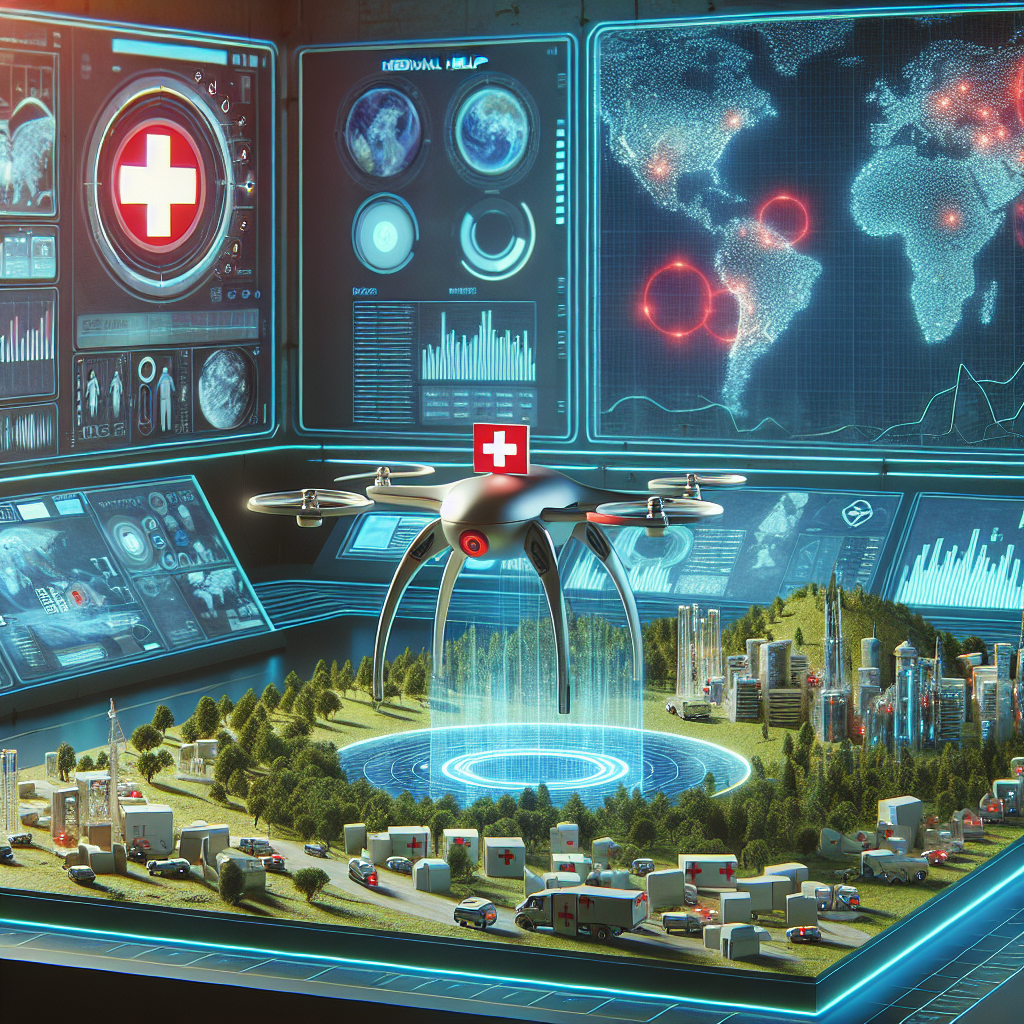The Role of AI in Disaster Response
Artificial Intelligence (AI) is revolutionizing the way we respond to disasters. From natural disasters like hurricanes, earthquakes, and wildfires, to man-made disasters like terrorist attacks and industrial accidents, AI is playing a crucial role in helping first responders and emergency management teams make faster and more informed decisions. In this article, we will explore the various ways in which AI is being used in disaster response, as well as the challenges and opportunities that come with its implementation.
1. Early Warning Systems
One of the key areas where AI is making a significant impact in disaster response is in the development of early warning systems. These systems use AI algorithms to analyze data from various sources, such as weather sensors, satellite imagery, and social media, to detect and predict potential disasters before they happen. For example, AI can analyze weather patterns and identify areas at risk of flooding, allowing authorities to evacuate residents and deploy resources in advance.
2. Search and Rescue Operations
AI-powered drones and robots are increasingly being used in search and rescue operations following disasters. These machines can navigate through hazardous environments, such as collapsed buildings or flooded areas, to locate survivors and assess the extent of damage. AI algorithms can also analyze data from sensors and cameras to identify signs of life, such as heat signatures or movement, in the rubble.
3. Damage Assessment
After a disaster strikes, AI can be used to assess the extent of damage to infrastructure, buildings, and other critical assets. By analyzing satellite imagery, aerial photographs, and other data sources, AI algorithms can quickly generate detailed maps and reports that help emergency management teams prioritize their response efforts. This allows them to allocate resources more efficiently and effectively.
4. Resource Allocation
AI can also help in optimizing the allocation of resources during disaster response. By analyzing real-time data on the location of emergency teams, shelters, medical facilities, and supplies, AI algorithms can suggest the best routes for delivering aid and coordinating rescue efforts. This ensures that resources are deployed where they are most needed, saving time and potentially lives.
5. Communication and Coordination
During a disaster, communication and coordination among different response teams are crucial for a successful response. AI-powered platforms can facilitate real-time communication and collaboration by providing a centralized hub for sharing information, coordinating activities, and tracking progress. These platforms can also analyze incoming data to identify emerging trends and patterns, allowing response teams to adjust their strategies accordingly.
6. Predictive Analytics
AI can also be used to predict the likelihood and impact of future disasters based on historical data and trends. By analyzing past incidents and environmental factors, AI algorithms can generate forecasts and risk assessments that help authorities prepare for potential disasters and mitigate their impact. This proactive approach can save lives and reduce the economic and social costs of disasters.
Challenges and Opportunities
While AI offers many benefits in disaster response, there are also challenges that need to be addressed. One of the main challenges is the potential for bias in AI algorithms, which can lead to inaccurate or unfair decisions. For example, if an AI system is trained on biased data, it may prioritize certain populations or regions over others, leading to unequal treatment in disaster response.
Another challenge is the lack of interoperability and standardization among AI systems used by different response teams and organizations. To maximize the effectiveness of AI in disaster response, there needs to be greater collaboration and coordination among stakeholders to ensure that data can be shared and integrated seamlessly.
Despite these challenges, there are also many opportunities for further innovation and improvement in the use of AI in disaster response. By investing in research and development, training and capacity building, and public-private partnerships, we can harness the full potential of AI to enhance our preparedness and resilience in the face of disasters.
FAQs
Q: How can AI help in predicting natural disasters?
A: AI algorithms can analyze data from various sources, such as weather sensors, satellite imagery, and social media, to detect patterns and trends that may indicate the likelihood of a natural disaster. By using machine learning techniques, AI can generate forecasts and alerts that help authorities prepare for potential disasters and take preventive measures.
Q: What are some examples of AI-powered drones and robots used in disaster response?
A: AI-powered drones and robots are being used in a variety of ways in disaster response. For example, drones equipped with cameras and sensors can be used to survey damaged areas and assess the extent of destruction. Robots can also be deployed to search for survivors in hazardous environments, such as collapsed buildings or flooded areas.
Q: How can AI help in coordinating response efforts during a disaster?
A: AI-powered platforms can facilitate real-time communication and collaboration among different response teams by providing a centralized hub for sharing information, coordinating activities, and tracking progress. These platforms can analyze incoming data to identify emerging trends and patterns, allowing response teams to adjust their strategies accordingly.
Q: What are some of the challenges in using AI in disaster response?
A: Some of the main challenges in using AI in disaster response include the potential for bias in AI algorithms, the lack of interoperability and standardization among AI systems, and the need for greater collaboration and coordination among stakeholders. Addressing these challenges requires a multi-stakeholder approach and ongoing investment in research and development.
In conclusion, AI is playing an increasingly important role in disaster response by providing early warning systems, enhancing search and rescue operations, assessing damage, optimizing resource allocation, facilitating communication and coordination, and predicting future disasters. While there are challenges that need to be addressed, there are also opportunities for further innovation and improvement in the use of AI to enhance our preparedness and resilience in the face of disasters. By harnessing the full potential of AI, we can save lives and protect communities from the devastating impact of disasters.

